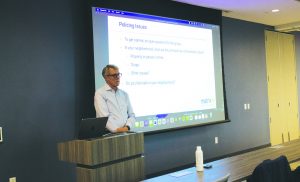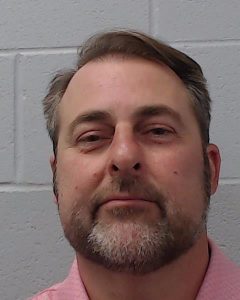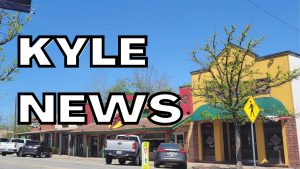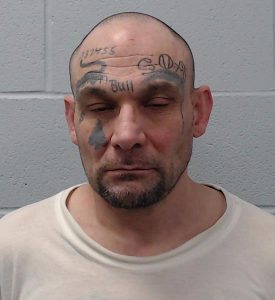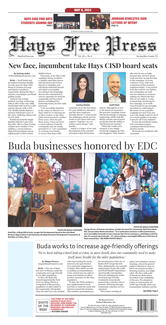By Kim Hilsenbeck
Kyle Police Department Lt. Andre Marmolejo looked on as his accident reconstruction specialists – what he calls the “Crash Team” – began recording data from a recent fatality collision.
Just 30 minutes prior, he handed out assignments to officers Daniel Gooding, James Jones, David Saenz and Cadet Ian Mabry at a prep meeting.
“Park your vehicles here and here,” he said, pointing to the map on the screen in the KPD headquarters.
On Jan. 11, Kyle police officers closed down a portion of the I-35 Access road and Burleson Rd. between I-35 and Spring Branch Drive for two hours.
Law enforcement reconstructed a major crash that took the life of Kyle resident Steve Vasquez, 34, of Kyle. His wife, Stephanie Vasquez, was seriously injured. Their unborn child was listed as stable.
During the reconstruction, Kyle police captured laser measurements from the accident scene. They used points on the roadways that were painted on by officers following the collision.
Marmolejo’s Crash Team performed accident reconstruction in the hours after the collision. But a heavy fog advisory prevented them from completing the work.
“Fog and other weather factors can affect accuracy of the readings and equipment,” he said.
He added that coming back during the day also provides officers with a chance to see more of the crash scene than they were able to in the dark.
To reconstruct, officers first start at the point where all the vehicles ended up following the crash.
They look for visual cues such as tire marks on the road and grass, debris, felled road signs and more. In this case, a stop sign was on the ground not far from where the vehicles came to rest in the grass.
Officers then create and photograph the collision’s trajectory using paint to define each point they believe was part of the scene.
A laser measurement system is then used.
“It’s a lot like the equipment used by construction firms when they survey a road for construction,” Marmolejo said.
The equipment sends back the distance between two points. Two scribes, both police officers also capture all of the data manually. They create a map of the scene along the way to ensure everything matches.
“This way, we capture redundant data in case of technical or equipment failure,” Marmolejo said.
The process can take anywhere from 90 minutes to two hours.
“Back in the day, we had to come out here with tape measures and record the distance between all the points. It could take anywhere from five to six hours,” Marmalejo said.
Technology streamlines the process and provides accurate data.
While many officers use the equipment, Marmolejo, Gooding, Saenz, Jones and three other officers each have 250 hours of specialized training in accident reconstruction.
Marmolejo said there are several reasons why they go through the effort.
“We want to gather as much data as we can about any serious accident or fatality,” he said. “That can help in cases where charges may be filed, for example, against a driver.”
Sometimes, he added, it’s to provide families and loved ones with details on what happened and how.
“It’s important to provide the truth so they have some closure,” Marmolejo said.
Crash scene data is combined with witness statements and information from victims.
Taken in total, all that information can assist law enforcement and the district attorney by showing the cause of the crash.
Prosecutors and defense attorneys use the resulting data and the officers’ analysis if a case goes to trial.
The specialized training involves a great deal of math and science. Kyle’s seven-person crash team received training from local experts, including a group out of Texas A&M and the collision recon unit from San Antonio Police.
“It’s pretty intense,” Marmolejo said. “We could also get an additional training in motorcycle accidents and commercial vehicles.”



